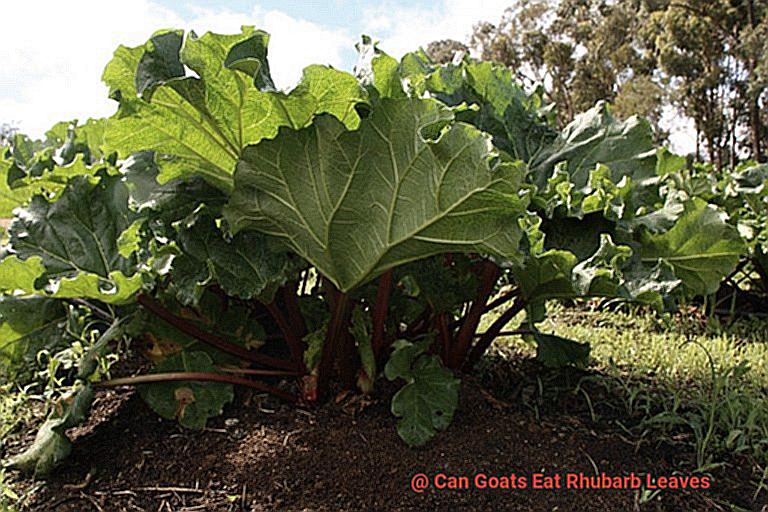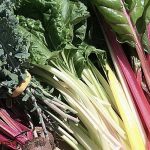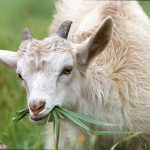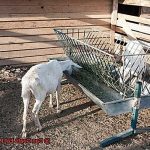Do you have a herd of goats that you adore?
As a goat parent, it is crucial to keep an eye on what they consume. Goats are notorious for nibbling on various plants, but not all greenery is safe for them.
Rhubarb, with its lush green leaves and magnificent red stems, is a common garden plant. However, can goats eat rhubarb leaves?
The answer may surprise you. While goats are known for eating almost anything in sight, rhubarb leaves should not be on their menu.
The leaves contain oxalic acid that can be toxic to livestock animals like goats. Overconsumption of the leaves can lead to kidney damage, excessive salivation, tremors, and even death.
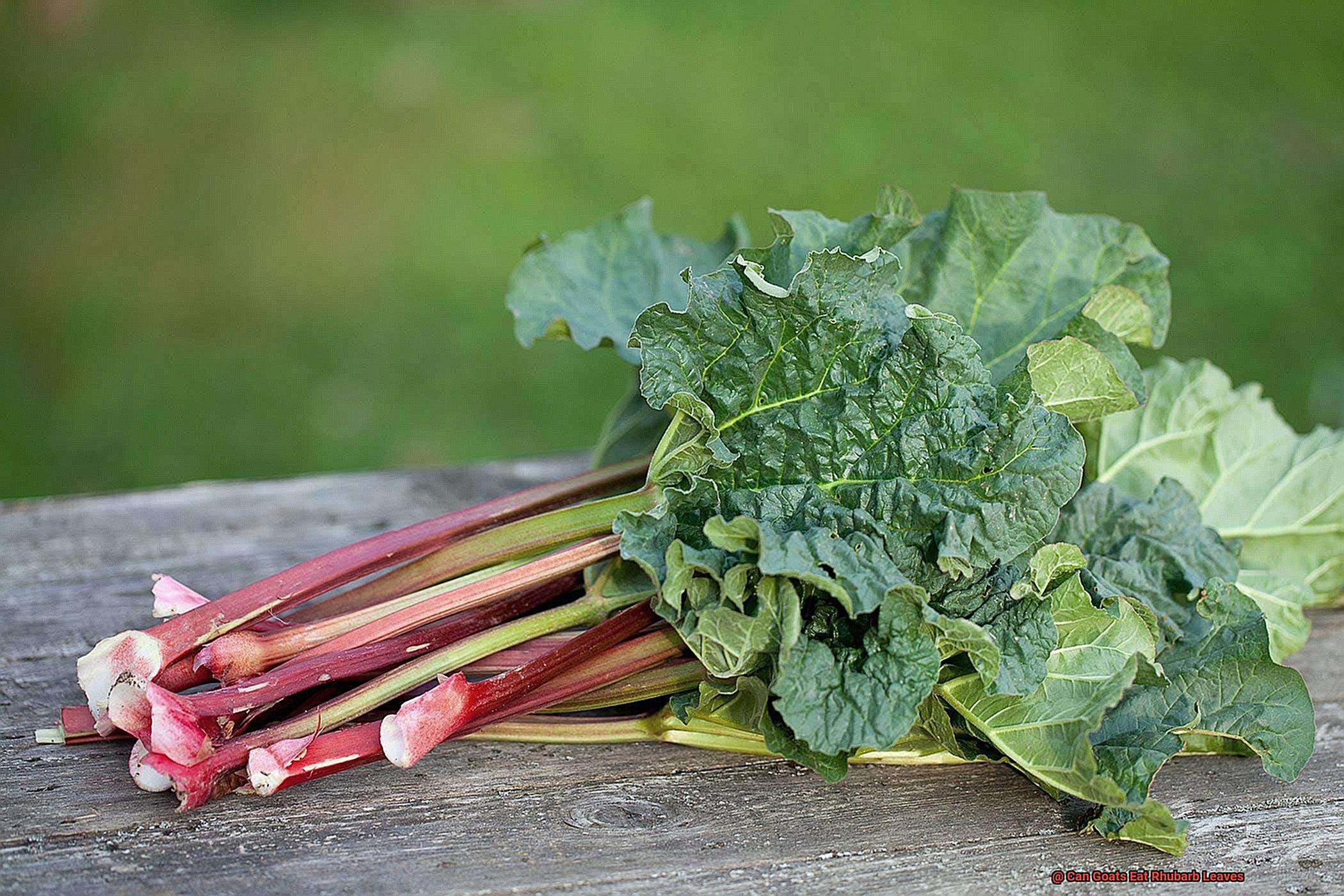
But don’t worry. Your goats don’t have to miss out on their favorite leafy treats entirely.
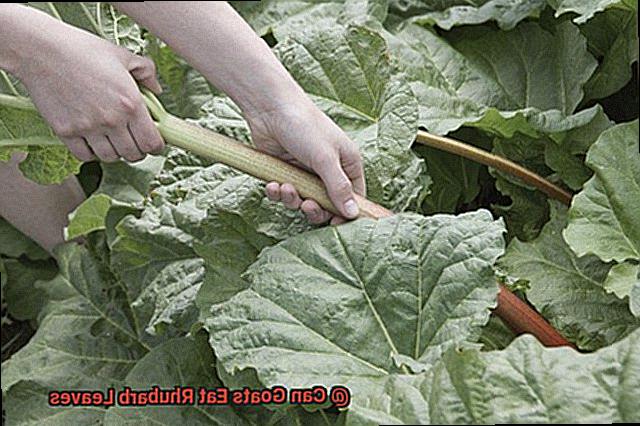
Rhubarb stems are safe for consumption and are rich in vitamin C and dietary fiber. However, it’s essential to ensure that the stems are fresh and free from decay as spoiled stems can cause diarrhea in goats.
Keep reading to learn more about the dietary needs of your beloved goats and how to keep them healthy.
What Is Rhubarb?
Contents
This perennial plant is widely cultivated for its edible stalks, which are a popular addition to desserts, jams, and sauces. Native to Siberia but grown for centuries in Europe and North America, rhubarb is a staple in many kitchens.
Belonging to the Polygonaceae family, which also includes other edible plants like buckwheat and sorrel, rhubarb’s scientific name is Rheum rhabarbarum. Though it goes by other names such as pieplant or garden rhubarb, its unique flavor and versatility make it a favorite among chefs and home cooks alike.
But before you start adding rhubarb leaves to your goat’s diet, it’s important to know that not all parts of the plant are safe for consumption. The leaves contain high levels of oxalic acid, which can cause kidney failure and other health problems in both humans and animals when consumed in large quantities.
In fact, the leaves of the plant are toxic to many animals, including goats. So while it’s recommended that goat owners avoid feeding their goats rhubarb leaves altogether, the stalks of the plant are safe to eat and are a great source of vitamins and minerals.
Rhubarb is usually harvested in the spring and early summer months when the stalks are at their peak. The stalks can be eaten raw or cooked and are often paired with sweet ingredients like sugar or honey to balance out their tartness.
Rhubarb is a popular culinary ingredient that adds both flavor and nutrition to a variety of dishes. Its unique taste pairs well with strawberries, blueberries, and other fruits as well as savory dishes like roasted meats.
If you’re thinking about introducing rhubarb into your goat’s diet or your own cooking, it’s important to consult with a veterinarian or nutritionist first. While some goats may be able to tolerate small amounts of rhubarb leaves, it’s generally not recommended due to the high levels of oxalic acid present.
Just remember to stick to the stalks and enjoy this tasty ingredient in moderation, as the leaves can be toxic.
Does Rhubarb Contain Oxalic Acid?
While rhubarb stalks are safe and delicious for both humans and goats, the leaves contain high levels of oxalic acid, which can cause kidney damage and other serious health problems.
Oxalic acid is a naturally occurring compound found in many plants, including rhubarb. In small amounts, it’s not harmful to most animals or humans.
However, when consumed in large quantities, it can lead to the formation of calcium oxalate crystals, which can cause kidney stones and other health issues. Unfortunately, goats are particularly sensitive to oxalic acid and should never be fed rhubarb leaves.
Even a small amount of the leaves can be toxic to goats and can cause severe health problems or even death. Symptoms of oxalic acid poisoning in goats include weakness, lethargy, loss of appetite, and decreased urine output.
It’s important to be aware of the dangers of feeding your animals rhubarb leaves and take steps to prevent accidental ingestion. This may include fencing off areas where rhubarb plants are growing or disposing of any excess leaves or stalks safely.
By taking these precautions, you can help keep your goats safe and healthy. In conclusion, while rhubarb is a tasty and versatile vegetable for human consumption, it’s essential to remember that the leaves contain high levels of oxalic acid that can be toxic to goats.
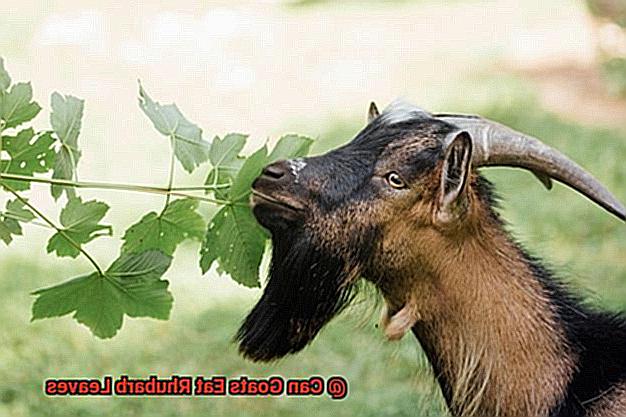
Therefore, always be careful when feeding your goats any new foods and consult with a veterinarian if you have any concerns about their diet or health.
Is Oxalic Acid Toxic For Goats?
It’s important to note that oxalic acid is a naturally occurring substance found in many plants, including rhubarb leaves. While goats can consume small amounts of oxalic acid without consequences, excessive amounts can be harmful, and even deadly.
If a goat consumes an excessive amount of oxalic acid, it can lead to a condition known as oxalate poisoning. Symptoms of oxalate poisoning in goats include diarrhea, dehydration, tremors, and difficulty breathing.
In severe cases, the goat may experience convulsions and die. As responsible goat owners, it’s crucial to take precautions when feeding your animals.
If you have rhubarb plants on your property, be sure to fence them off or dispose of excess leaves and stalks safely. Remember that prevention is always better than cure.
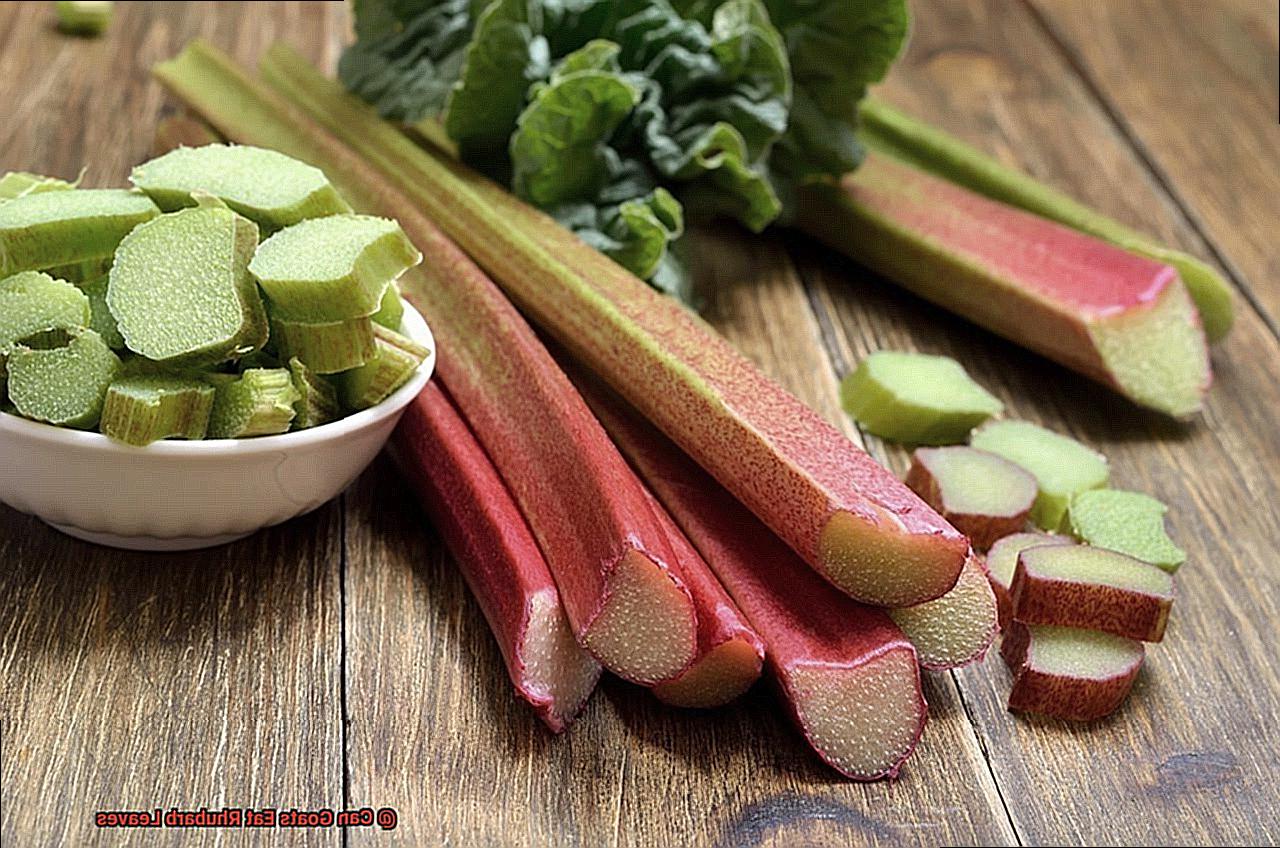
If you suspect that your goat has ingested toxic levels of oxalic acid or is showing symptoms of oxalate poisoning, seek veterinary attention immediately. Your veterinarian can provide the necessary treatment to help your goat recover.
Are All Parts of the Rhubarb Plant Toxic?
Firstly, it’s important to note that the stalks, or “petioles,” are perfectly safe for consumption and are commonly used in cooking and baking.
In fact, rhubarb is a popular ingredient in pies, jams, and sauces.
Roots and Seeds
While there is limited information available on their toxicity, some sources suggest that the roots may contain trace amounts of oxalic acid.
However, it’s unclear whether this poses a significant risk to animals or humans. The seeds, on the other hand, are not typically consumed and are not considered a food source.
If you’re a goat owner or have other animals that graze in your yard, it’s important to exercise caution when feeding them rhubarb. While the stalks are safe for consumption, excess consumption of the leaves can lead to deadly oxalate poisoning.
It’s better to prevent than to cure by fencing off or disposing of excess leaves and stalks safely, and avoiding feeding them altogether.
So, while the leaves of the rhubarb plant are toxic and should be avoided by both humans and animals, the stalks are a delicious and safe addition to many recipes.
Remember to always consult with a veterinarian before introducing any new foods into your animal’s diet as different animals may have varying tolerances for oxalic acid.
How Can I Safely Feed Rhubarb to My Goats?
While it can be a tasty addition, it’s essential to remember that the leaves of the plant are toxic and should never be consumed.
However, the stalks of the plant are safe for goats in moderation. To safely feed rhubarb to your goats, consider chopping the stalks into small pieces and mixing them with other healthy foods like hay or grains.
This not only ensures a balanced diet but also prevents overconsumption, which can lead to digestive issues and diarrhea. If you want to treat your goats, mix chopped rhubarb with oats, molasses, and other healthy ingredients to create a delicious snack.
Remember not to overdo it, as too many treats can cause health problems. It’s crucial to provide a well-balanced diet of hay, grains, fresh fruits, and vegetables for optimal health.
Always remember that the leaves of the rhubarb plant are toxic and should never be fed to your goats.
NuRChGFE70k” >
Conclusion
To sum it up, goats are notorious for their love of munching on plants.
However, it’s essential to be mindful of what they consume. Rhubarb is a popular garden plant with luscious green leaves and striking red stems that may appear as a delightful treat for goats.
But hold your horses. It’s crucial to keep in mind that the leaves contain oxalic acid, which can be toxic to livestock animals like goats.
Overindulging in rhubarb leaves can lead to severe kidney damage, excessive salivation, tremors, and even death. Therefore, it’s highly recommended that goat owners steer clear of feeding their goats rhubarb leaves altogether.
Nevertheless, rhubarb stalks are safe for consumption and are packed with vitamin C and dietary fiber. It’s imperative to ensure that the stems are fresh and free from decay since spoiled stalks can cause diarrhea in goats.
If you’re planning on introducing rhubarb into your goat’s diet or your own cooking, it’s vital to consult with a veterinarian or nutritionist first. Although some goats might tolerate small amounts of rhubarb leaves, it’s generally not advised due to the high levels of oxalic acid present.
In conclusion, always exercise caution when introducing new foods to your goats’ diet and seek advice from a veterinarian if you have any concerns about their health or nutrition.

